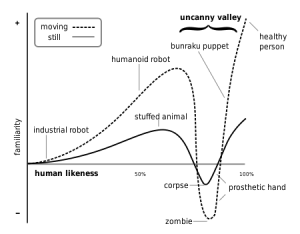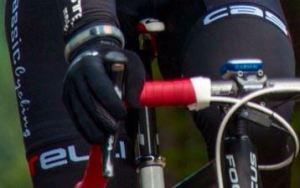Uncanny valley is a hypothesis that states things look cute if they kind of look human, until they look really human, but not quite human. In that case, the natural response is repulsion.
The concept of uncanny valley has been around for quite some time. Masahiro Mori, a Japanese professor of engineering at Tokyo Institute of Technology proposed the now-famous concept of the uncanny valley in the 1970’s. You can check out his seminal article here.
Hollywood took interest in the concept of uncanny valley as some films and characters seemed to test worse than expected. The reason may well be found in the level of likeness to human and where they land in the uncanny valley.
While the total body of research on uncanny valley is fairly extensive, one area that stands out as interesting to me is that of miss-match. That is, characteristics are miss-matched in relative human likeness. So a robot with on outward casing of metal should have a “computer” voice, whereas a robot that looks damn near human should have a damn near human voice. Robocop, well you nailed it. Part human, part robot, and the voice that matches = less revulsion.
So what? Recently I walked into the room with the television in it (what do you call that room?) to be dropped to the depth of uncanny valley. On the television and much to my dismay was the image of a guy who had all kinds of implants on his body to make him look more muscular. I was immediately repulsed, hit record and started some popcorn. I had walked into the middle of an episode of the television show Botched. What struck me aside from the sheer sadness of the tragedy of being that unhappy with the body you are in, is how some of the featured… participants I guess I could say, look less human than human.
I’ve experienced the feeling with Michael Jackson as he transformed himself into something other than healthy human looking.
Am I judging people who seek medical help to enhance their appearance? Nah, I don’t really care how much silicone gets injected in various body parts or how people alter their looks. I do find it interesting to have some theoretical basis by which to understand my repulsion of the highly altered.


